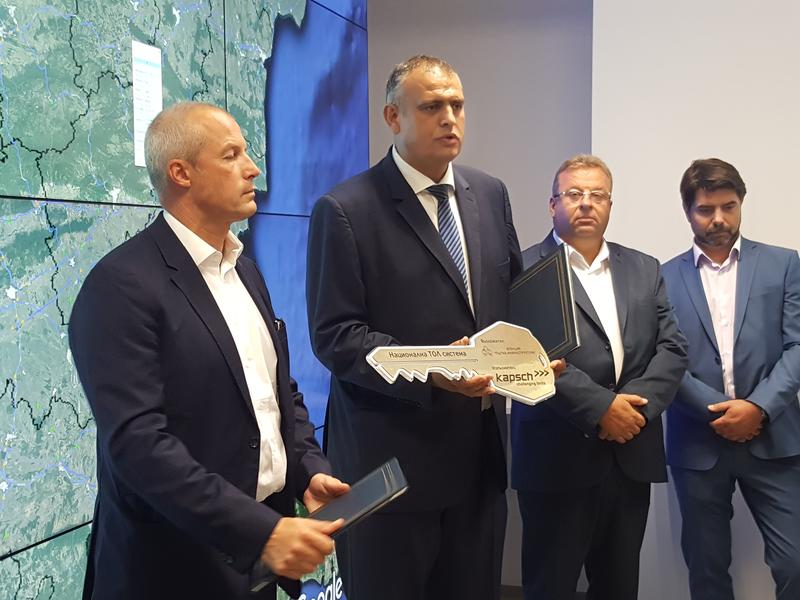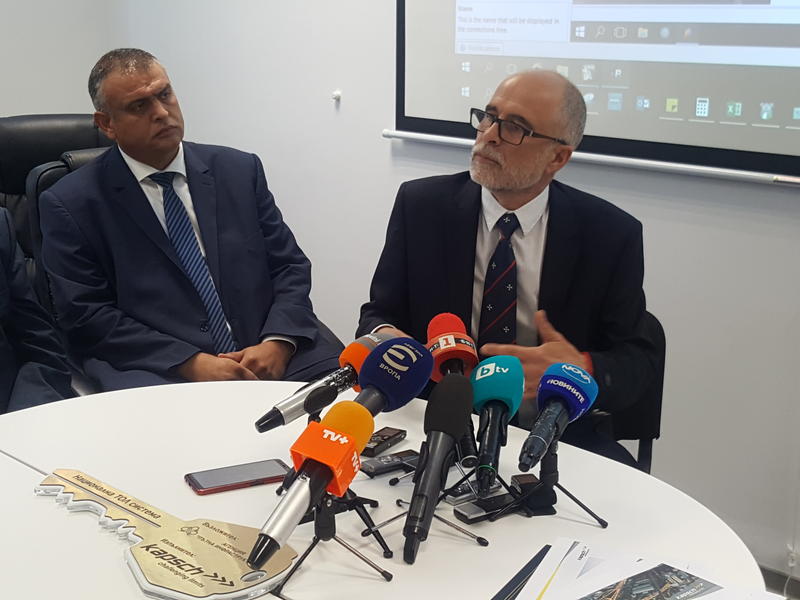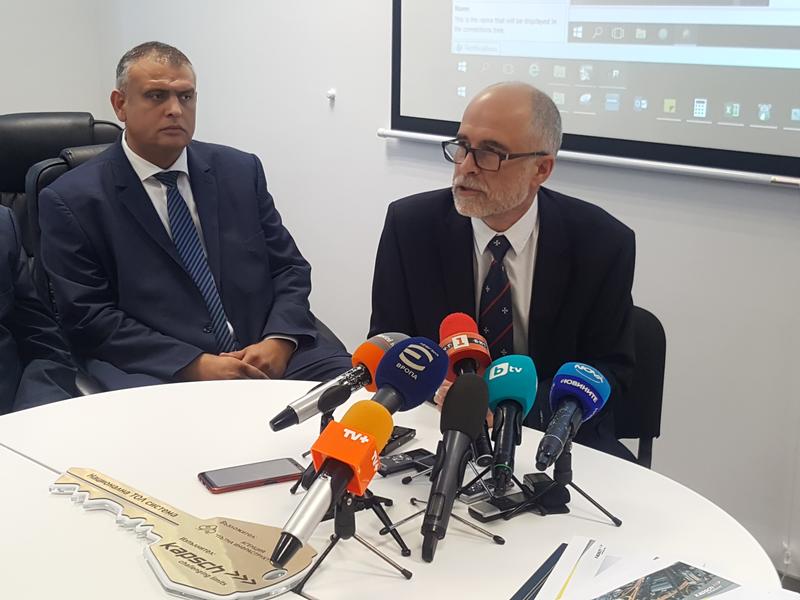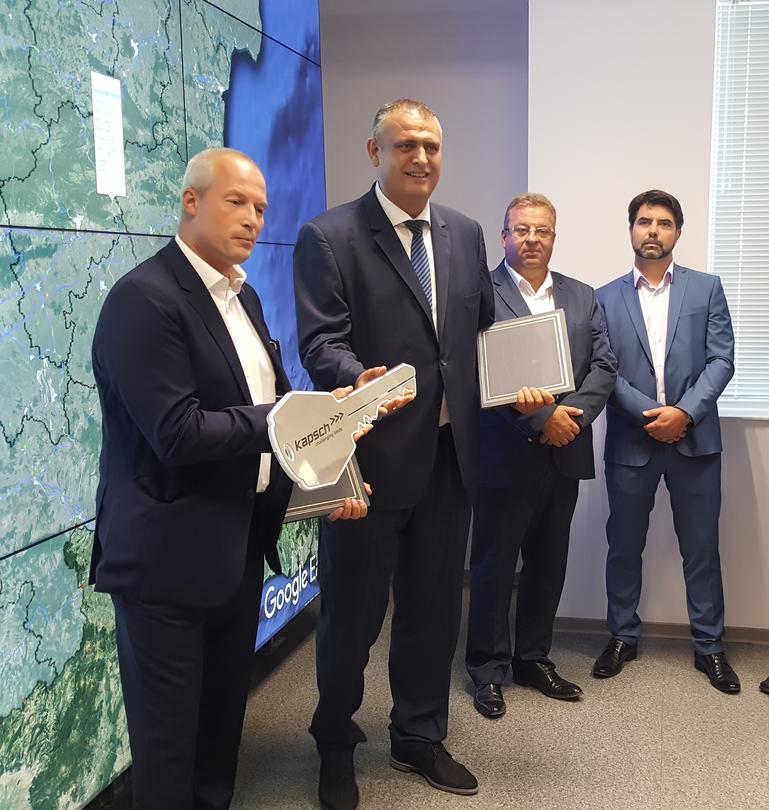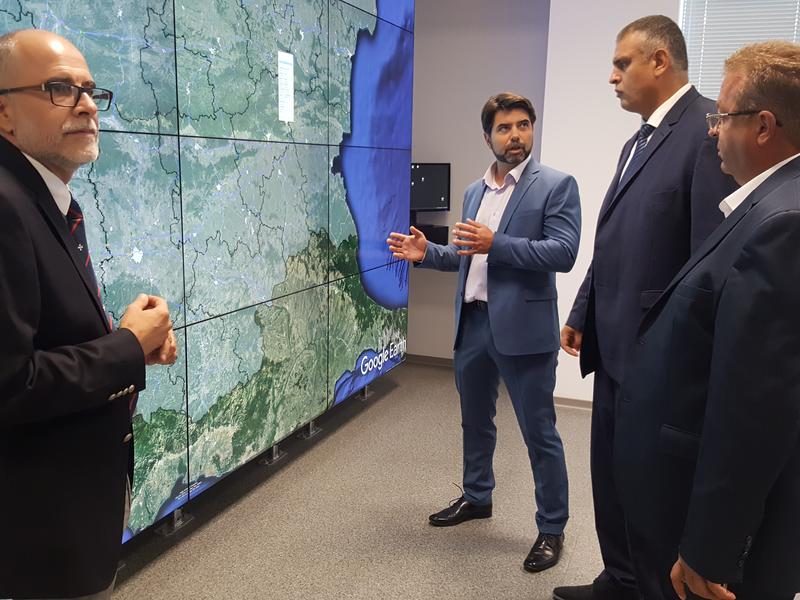The Toll System is 100% Ready and Handed Over to the Road Infrastructure Agency
The Toll System is 100% Ready and Handed Over to the Road Infrastructure Agency
By Ministry of Regional Development and Public Works
The Chairman of the Management Board of the Road Infrastructure Agency, Georgi Terziyski, accepted the symbolic key for the electronic toll collection system based on travel distance from the contractor of the project for design, construction and commissioning of the system – Kapsch Traffic Solutions DZZD. As of today, the Road Infrastructure Agency will operate the electronic system through the National Toll Administration in the toll section as well, and not only for e-vignettes, as it was up until now.
In the National Toll Administration building, Georgi Terziyski and the CEO of Kapsch Traffic Solutions DZZD, Michael Webber, exchanged hand-over records, whereby the country accepts the toll system, including 100 new and 100 retrofitted stationary checkpoints. As for the other 95 existing checkpoints, which have RIA’s traffic cameras installed, they are to be upgraded with laser scanners and cameras. The duration of the contract is until February 2020.
Starting August 20 next week, 4 demonstration centers of the National Toll Administration will be put into operation, in which carriers and everyone interested in the toll system will be able to test the issuance of route passes – the so-called manual toll declaration, prof. Oleg Asenov told the media. He is member of the Management Board of the Road Infrastructure Agency responsible for the implementation of the toll system. The demonstration centers will be in Sofia, Plovdiv, Varna and Ruse and will be open on business days from 2:00 PM to 6:00 PM. People will be able to test the purchase of route passes from all four channels through which the Road Infrastructure Agency will be selling them – self-service terminals, www.bgtoll.bg, the mobile application and at cashiers. With these tests, the technical operation of the toll system will begin and individual components will be gradually introduced. Once it is successfully completed, within a few months, but no later than March 1, 2020, its commercial operation will start, with heavy goods vehicles moving from vignettes to tolls.
Currently, the electronic system operates in three environments – test mode, development mode and commercial operating environment, prof. Asenov explained. As of today, the system is moving from test mode to the development environment, with a test range of about 6,000 km of roads and test tariffs that were discussed at the last meeting of the Public Council at the Minister of Regional Development and Public Works. The purpose is to be able to carry out system tests together with the carriers. The Chairman of the Association of Bus Transport, Vasil Pironkov, confirmed the readiness of the transport industry to participate in the tests of the toll system. This is test that will clarify three things – how expensive the transport service will become, whether it will affect the price of the transported goods and, accordingly, what revenues will be received in the state, so it could provide funding for the road infrastructure, he pointed out.
After the start of the commercial operation of the toll system, when purchasing a route pass, the user of the national road network will have to specify a starting and ending point of their route. The system will offer a shorter or a longer route. After making a selection, the users will also need to set intermediate points through which they will pass – a minimum of two and a maximum of four intermediate points, or in other words – a total of up to 6 points. The system will automatically calculate the amount and will ask the customer to confirm the parameters of the route and of the vehicle (category, emission class, numbers of axles). The route passes will be valid for 24 hours. Registered users will be able to purchase one up to 7 days in advance and unregistered users – up to 24 hours before its validity begins.
In addition to the purchasing a route pass, the operation of stationary checkpoints was also demonstrated at the press conference. The so-called portal frames are equipped with 3D laser scanners with different types of cameras for each lane, as well as with a viewing camera. When the vehicle approaches a gantry frame, a laser scanner is turned on, which activates the whole frame, cameras, etc. Two photos will be taken – one of the front registration plate and one from the viewing camera. After the vehicle passes, a photo of the rear registration plate will be taken. Then an automatic check from the system of the two photos follows, for matching of the registration plates. In case of a 100% match, the information is sent to the National Road Administration data center but only in case of an offence. The information for the correct road users will be automatically deleted in order to avoid an unnecessary load of the system.
In less than a 95% match, the information from stationary checkpoints will be directed to the Violation Verification Center at the National Toll Administration and rechecked. The system may require an additional photo of the observation cameras, which shall be reconfirmed by a supervisor. Only then the violation will be processed and submitted to the National Toll Administration road inspectors.


